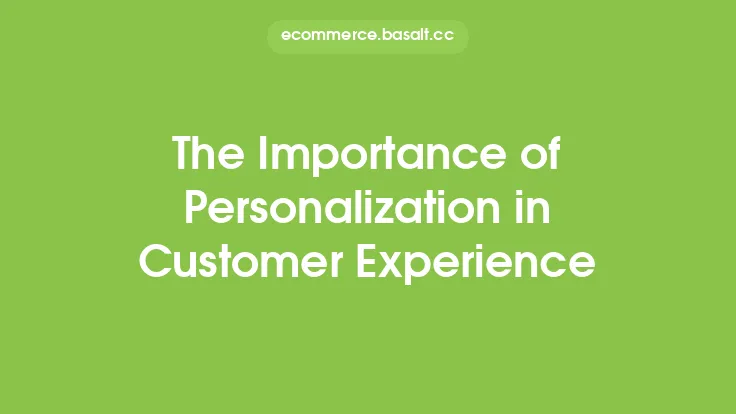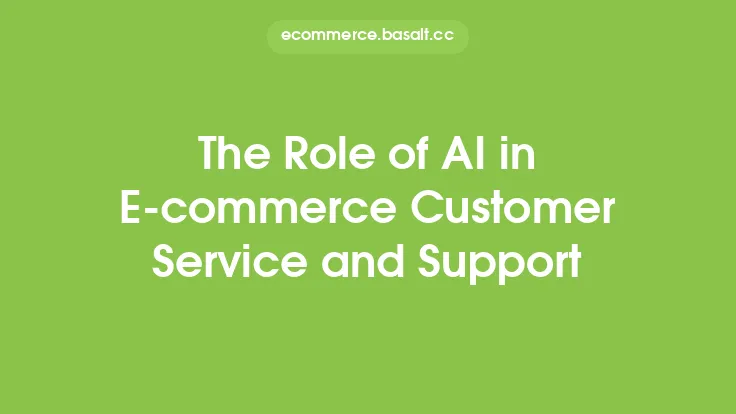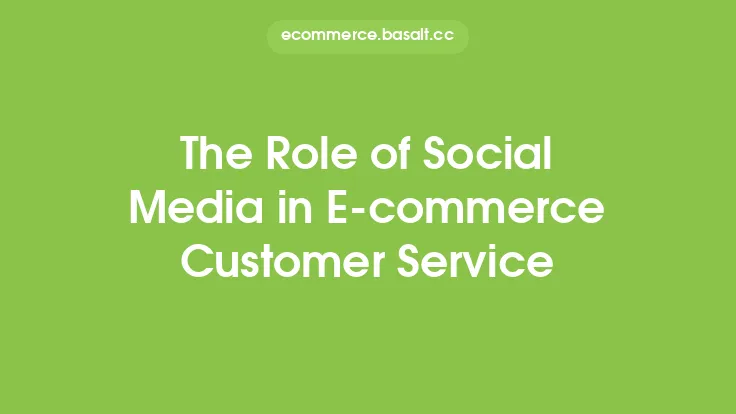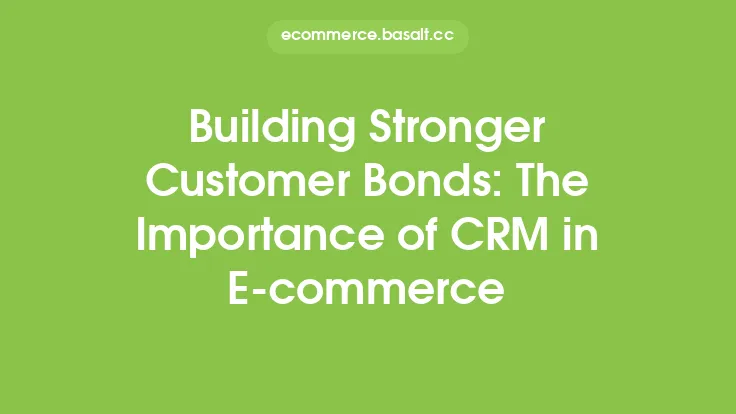In today's competitive e-commerce landscape, providing exceptional customer service is crucial for building loyalty, driving sales, and fostering long-term growth. One key aspect of delivering outstanding customer service is personalization. Personalization in customer service refers to the practice of tailoring interactions to individual customers' needs, preferences, and behaviors. This approach enables businesses to create a more humanized and engaging experience, setting them apart from competitors and leaving a lasting impression on their customers.
Understanding Personalization in Customer Service
Personalization in customer service involves using data and analytics to understand customer behavior, preferences, and pain points. This information can be used to create customized experiences, such as addressing customers by name, offering relevant product recommendations, and providing tailored support. Personalization can be applied across various touchpoints, including email, phone, live chat, and social media. By leveraging customer data, businesses can create a more personalized and empathetic experience, making customers feel valued and understood.
Benefits of Personalization in Customer Service
The benefits of personalization in customer service are numerous. Personalization can lead to increased customer satisfaction, loyalty, and retention. When customers feel that a business understands and cares about their needs, they are more likely to return and recommend the business to others. Personalization can also drive sales, as customers are more likely to purchase from a business that offers relevant and tailored product recommendations. Additionally, personalization can help businesses to differentiate themselves from competitors, creating a unique and memorable experience that sets them apart.
Strategies for Implementing Personalization in Customer Service
Implementing personalization in customer service requires a strategic approach. Businesses can start by collecting and analyzing customer data, such as purchase history, browsing behavior, and demographic information. This data can be used to create customer profiles, which can inform personalized interactions and recommendations. Businesses can also use technology, such as CRM software and marketing automation tools, to streamline and automate personalized interactions. Furthermore, businesses can train their customer service representatives to use personalized language and tone, addressing customers by name and referencing their previous interactions.
The Role of Technology in Personalization
Technology plays a vital role in enabling personalization in customer service. CRM software, marketing automation tools, and data analytics platforms can help businesses to collect, analyze, and act on customer data. These technologies can also automate personalized interactions, such as email campaigns and chatbot conversations. Additionally, technologies like artificial intelligence and machine learning can help businesses to predict customer behavior and preferences, enabling more accurate and effective personalization. However, businesses must ensure that they are using technology in a way that is transparent, secure, and respectful of customer privacy.
Measuring the Effectiveness of Personalization
Measuring the effectiveness of personalization in customer service is crucial for understanding its impact and identifying areas for improvement. Businesses can use metrics such as customer satisfaction, loyalty, and retention to evaluate the success of their personalization efforts. They can also use data analytics to track the effectiveness of personalized interactions, such as email open rates and conversion rates. Additionally, businesses can collect feedback from customers, using surveys and focus groups to understand their perceptions of personalized experiences. By regularly measuring and evaluating the effectiveness of personalization, businesses can refine their strategies and ensure that they are delivering the best possible experience for their customers.
Overcoming Challenges and Limitations
While personalization in customer service offers numerous benefits, there are also challenges and limitations to consider. One of the main challenges is collecting and analyzing high-quality customer data, which can be time-consuming and resource-intensive. Businesses must also ensure that they are using customer data in a way that is transparent, secure, and respectful of customer privacy. Additionally, personalization can be resource-intensive, requiring significant investment in technology and training. However, by prioritizing personalization and investing in the necessary resources, businesses can overcome these challenges and deliver exceptional customer experiences.
Best Practices for Personalization in Customer Service
To get the most out of personalization in customer service, businesses should follow best practices such as collecting and analyzing high-quality customer data, using technology to streamline and automate personalized interactions, and training customer service representatives to use personalized language and tone. Businesses should also prioritize transparency, security, and customer privacy, ensuring that they are using customer data in a way that is respectful and responsible. Additionally, businesses should regularly measure and evaluate the effectiveness of their personalization efforts, using data analytics and customer feedback to refine their strategies and improve the customer experience.
Conclusion
Personalization in customer service is a powerful way to build loyalty, drive sales, and foster long-term growth. By understanding customer behavior, preferences, and pain points, businesses can create tailored experiences that meet individual needs and exceed expectations. While there are challenges and limitations to consider, the benefits of personalization far outweigh the costs. By prioritizing personalization and investing in the necessary resources, businesses can deliver exceptional customer experiences, setting themselves apart from competitors and driving success in the competitive e-commerce landscape.





